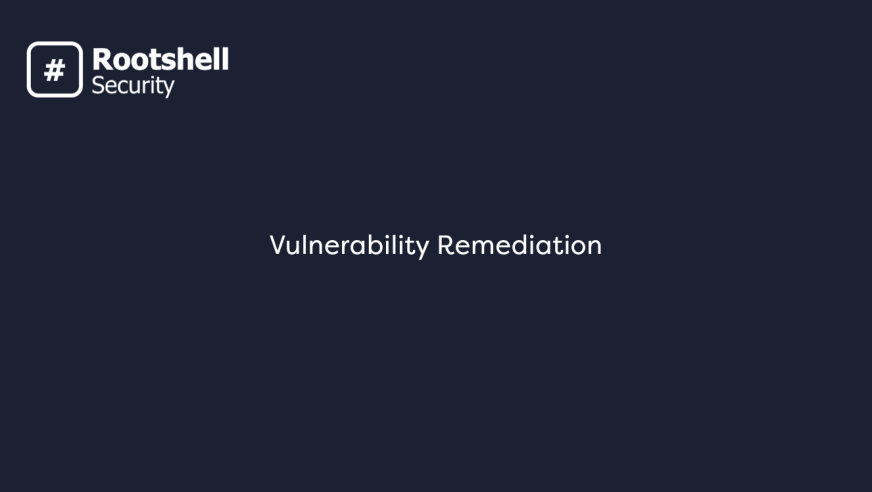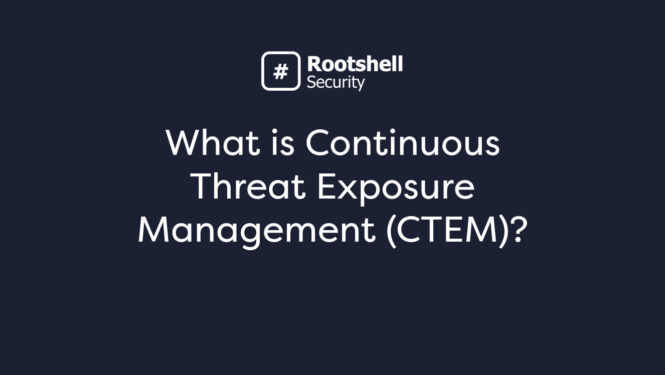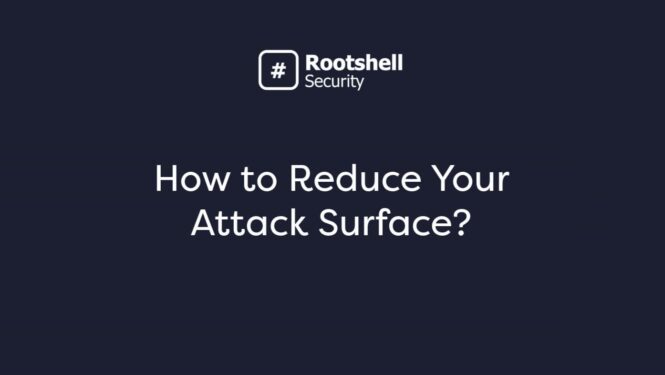The Benefits of a Vulnerability Remediation Solution
Vulnerability remediation is essential in a world of ever-evolving cyber threats. Successful vulnerability remediation enables organizations to prioritize and address critical issues on a continuous basis, closing gaps that could facilitate cyber attacks.
Vulnerability remediation solutions take the legwork out of implementing and managing vulnerability remediation and help IT security teams gain the most insight from their vulnerability data.
Read on to learn about today’s vulnerability remediation challenges and how a vulnerability remediation solution can help.
What is Vulnerability Remediation?
Vulnerability remediation is the process of identifying, evaluating, prioritizing, and remediating security flaws within an organization’s network, systems, and applications.
The goal of vulnerability remediation is to ensure that organizations have complete visibility and control of weaknesses that exist within their IT estates on a continuous basis.
The terms ‘vulnerability remediation’ and ‘vulnerability assessment’ are oftentimes used interchangeably, but they have different meanings. Vulnerability remediation encompasses the end-to-end process of managing security issues, whereas a vulnerability assessment is a type of IT security test that discovers security issues within an organization’s network.
Why is Vulnerability Remediation Important?
Vulnerability remediation management is an essential part of an organization’s IT security strategy.
Effective vulnerability remediation helps IT security teams ensure that critical issues are discovered, analysed, and remediated as fast and efficiently as possible. This is critical to minimizing an organization’s attack surface and preventing cyberattacks, which could have devastating consequences for an organization’s data, personnel, and reputation.
Remediation Vulnerability Management also helps organizations allocate resources more effectively. Not all security vulnerabilities pose the same risk, and many may not even need to be remediated. Vulnerability Remediation Management tools provide a framework for security teams to assess and prioritize vulnerabilities, so organizations can ensure that resources are allocated to the most critical issues.
Another reason why vulnerability remediation is so important is that an organization’s threat landscape is ever-changing. The cyclical process of vulnerability remediation helps security teams assess and measure their security posture on a continuous basis so that there is very little opportunity for critical issues to be left unaddressed.
What is a Vulnerability Remediation Solution?
A vulnerability remediation solution could be a software, platform, or application that helps security teams implement effective vulnerability remediation.
The goal of a vulnerability management remediation solution is to equip security teams with the tools they need to manage the results from their threat assessments, including vulnerability assessments, penetration tests, and red team assessments. For example, these tools could aid in prioritising, delegating, reporting, tracking, and collaborating on remediation.

What is the Vulnerability Management Remediation Process?
Vulnerability remediation starts with the discovery of security issues and concludes with validating whether remediation has been successful, before repeating continuously.
It’s essential that the vulnerability remediation process is continuous, as new vulnerabilities could emerge at any time, and pre-existing vulnerabilities could become more critical. Read more on Continuous Vulnerability Management.
We have summarised the complete process of vulnerability remediation below.
- Discover: Identify vulnerabilities within your organization’s network by carrying out vulnerability assessments.
- Consolidate: Centralise your assessment results in one place. This could involve transferring results from PDFs to a standardised database.
- Assess: Analyse your vulnerabilities to establish their severity, the likelihood that they will be exploited, and what impact they could have on your organization.
- Prioritize: Assign severity scores to your assets in line with your analysis, and other factors such as resource availability.
- Remediate: The vulnerability management remediation phase involves implementing your remediation program to resolve vulnerabilities in line with your organization’s priorities.
- Re-assess: Verify whether your remediation efforts have been successful. Ultimately, your vulnerability management process should reduce the risk of your organization being compromised.
- Visualize and improve: Continuously improve your vulnerability management process; resolve any bottlenecks and ensure compliance with your organization’s service level agreements. For example, could you reduce your time-to-remediate (TTR)?
What are the challenges of Vulnerability Remediation?
As vulnerability management and remediation rely on many moving parts seamlessly working together to be successful, there are a range of vulnerability remediation challenges. A good vulnerability remediation solution can help address the following.
- Data overload: Vulnerability assessments can inundate you with data. You may find yourself emailing back and forth with vendors or hunting through PDF reports to find the results you need, which could hinder your ability to address issues fast.
- Tracking: Delegating remediation can require collaboration with different teams; both internal and external to your organization. This can be difficult keep track of without an appropriate system. Read more on vulnerability management tracking.
- Security concerns: Assessment results are highly sensitive documents; your organization would be incredibly vulnerable if they ended up in the wrong hands. Receiving and sharing your results using email or cloud applications could be risky.
- Time-consuming processes: Without a vulnerability management solution, teams typically need to reformat their assessment results before they can begin managing them, such as transferring results from PDFs to spreadsheets. This can be slow, repetitive, and take resources away from what’s most important.
- Human error: Not only can traditional vulnerability management processes be time-consuming; handling your assessment data manually can lead to mistakes. This could pose serious risks to your organization, particularly if a critical issue is missed.

The Benefits of a Vulnerability Remediation Solution
- Visibility: Vulnerability remediation solutions enable you to view results from different types of threat assessments alongside each other. This helps you gain greater visibility of your threat landscape as a whole.
- Vendor-agnostic: The best vulnerability remediation solutions don’t tie you to a specific vendor, enabling you to consolidate results from different suppliers.
- Real-time: As soon as a critical vulnerability is discovered, time is of the essence. A vulnerability remediation solution facilitates the delivery of your assessment results in real-time, so you can address critical issues as soon as they are identified.
- Continuous: Between security assessments, your organization could be at risk. Vulnerability remediation solutions ensure you are gaining continuous insight into your threats and remediating on an ongoing basis.
- Intelligence-driven: Vulnerability remediation solutions integrate threat intelligence with your vulnerability data. This helps teams gain greater context of their issues so they can prioritize most effectively and accurately evaluate risk.
- Automation: A vulnerability remediation solution cuts out countless manual and time-consuming tasks from your processes, from data handling to project management, freeing up essential time for what’s most important.
- Insight: There are many metrics that are valuable to track within vulnerability remediation, but calculating these manually is laborious. A vulnerability remediation solution generates insightful dashboards and reports, such as your mean time-to-remediate.
- Centralized Data: Vulnerability management can inundate you with data. A vulnerability remediation solution provides a central hub for your data from different security assessments. This saves you time, frustration, and put critical information at your fingertips.
The Rootshell Platform: Next Generation Vulnerability Remediation
The Rootshell Platform is a vendor-agnostic vulnerability remediation solution. It enables you to manage results from any type of IT security assessment, including penetration tests, giving you the unique advantage of analysing different assessment results alongside each other, in one standardized format.
The Rootshell Platform’s unique features help you accelerate every stage of the vulnerability remediation process and enhance efficiency from start to finish.
How The Rootshell Platform Improves Every Stage of Vulnerability Remediation
- Consolidate Your Supplier Assessment Data: Import any assessment result into Rootshell; store data from any penetration testing vendor or security service provider in one centralized hub.
- Integrate and Standardize Your Assessment Data: Generate a database for your results in one consistent format. No longer analyse assessment results in silos; view data from different threat assessments alongside each other.
- Contextualize and Prioritize Your Assessment Data: Receive real-time insights and gain greater context of your issues, helping you prioritize most effectively.
- Streamline Your Remediation Workflow: Make remediation faster and more efficient, with third-party integrations, collaboration tools, real-time updates from testers, and more.
- Track and Validate Your Remediation Results: Measure your remediation efforts against your service level agreements and track key metrics, such as your monthly remediation rate.
- Visualize and Analyse Technical Risk Across the Whole Organization: Gain a holistic view of your global threat landscape; effortlessly analyse your technical risk with insightful dashboards and automated reporting.



